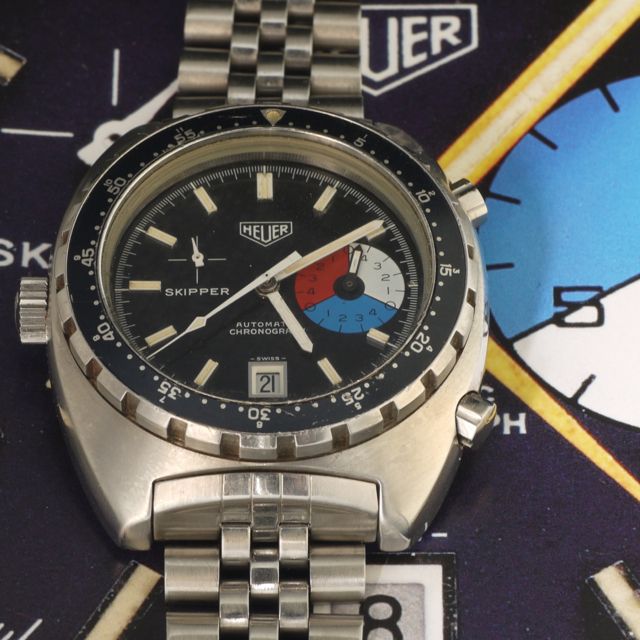
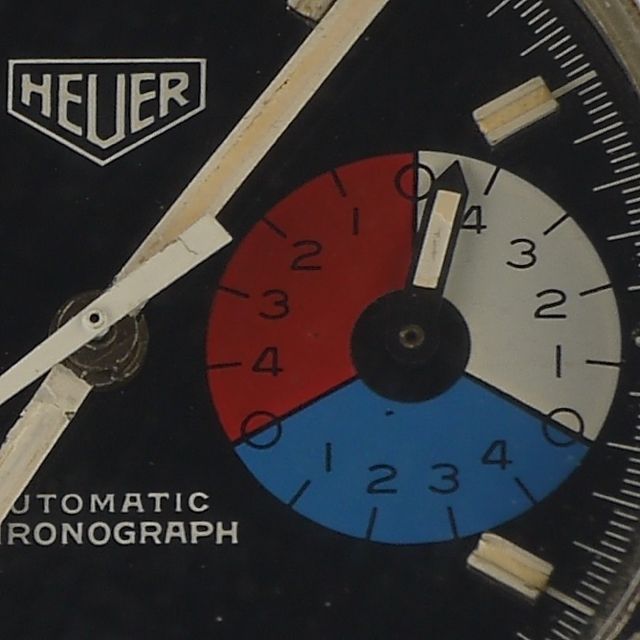
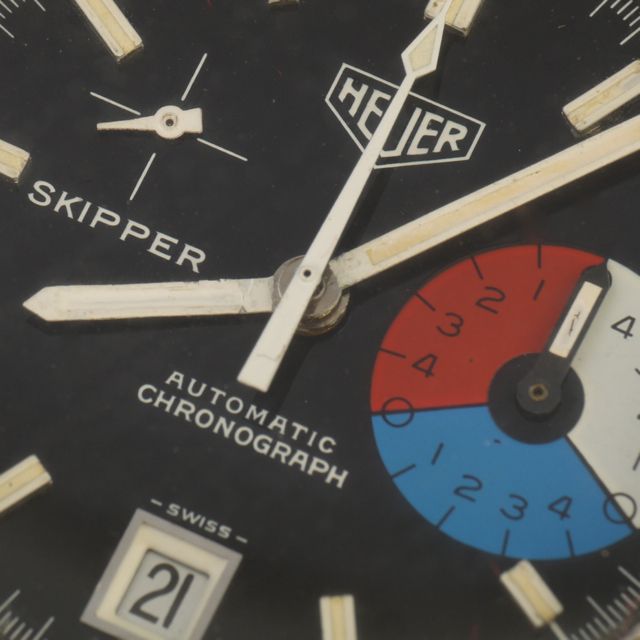
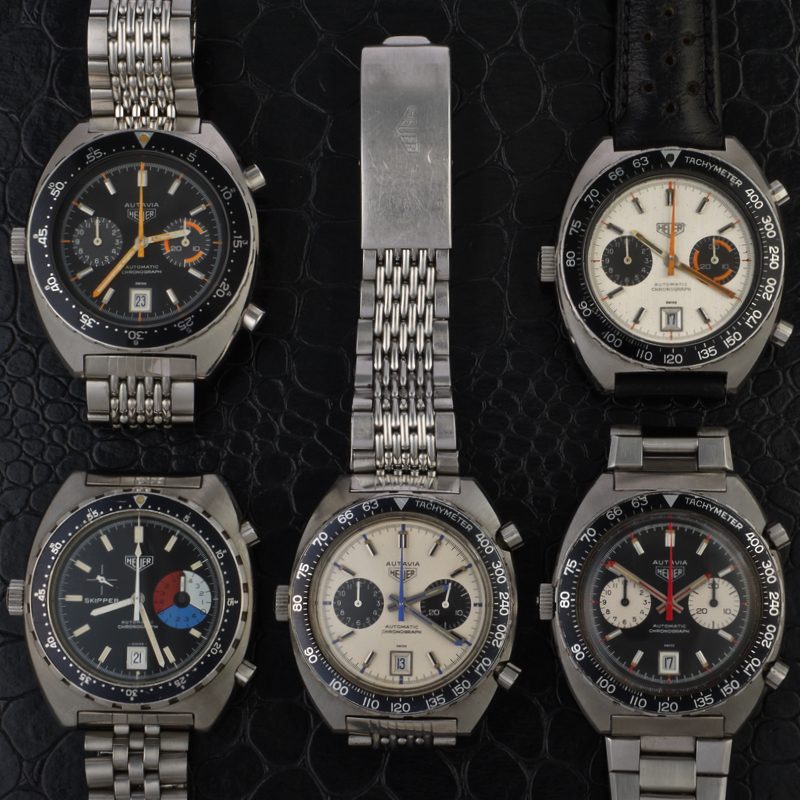
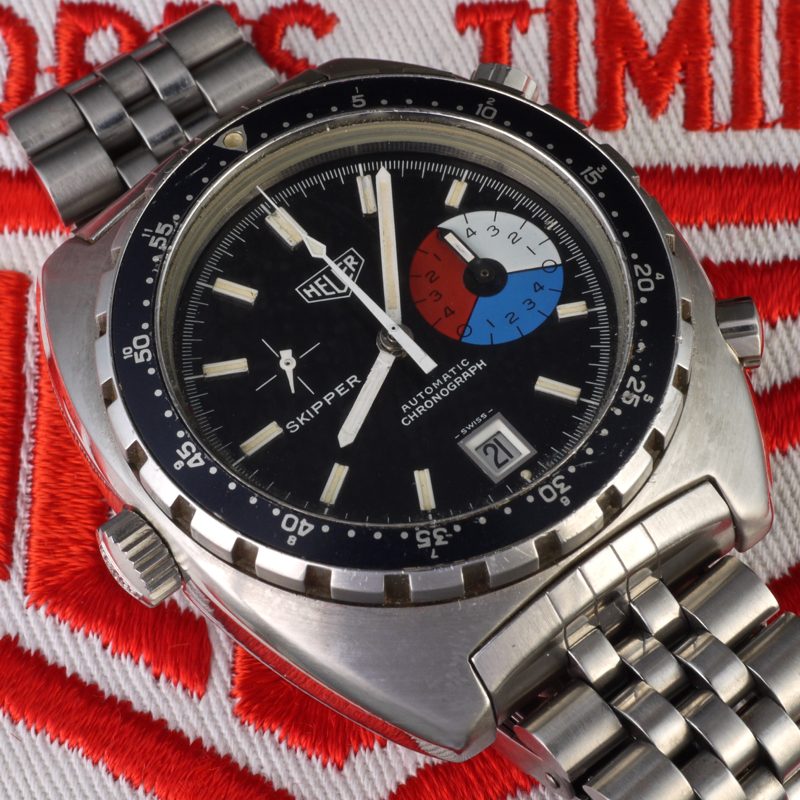
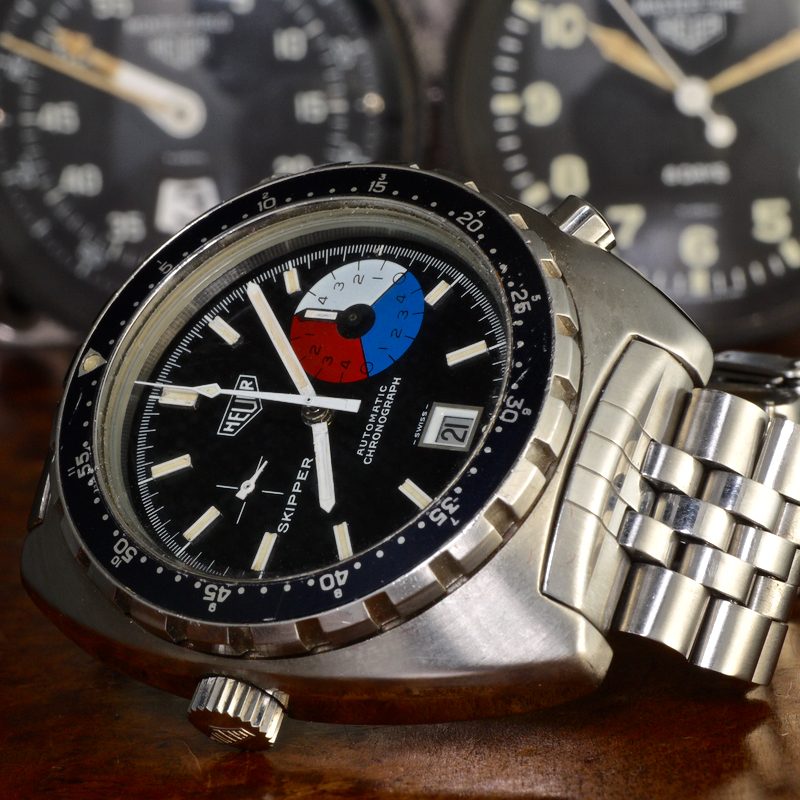
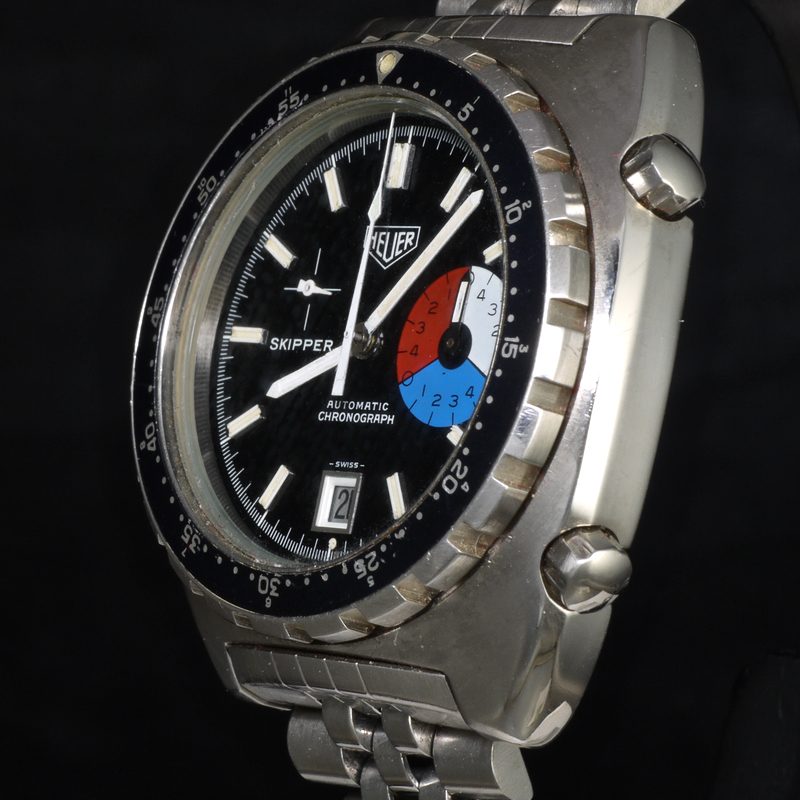
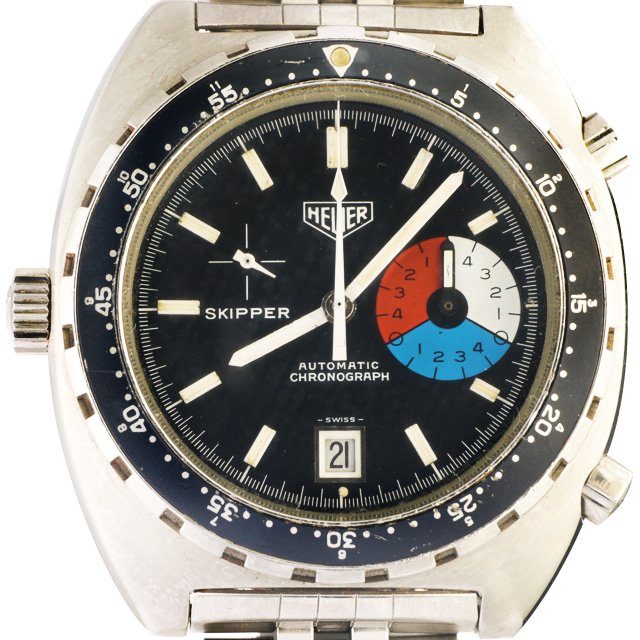
Heuer Skipper
A new elementary particle psi (now called J) is discovered by Burton Richter of Stanford University1974 Heuer Skipper ref. 15640 is basically an Autavia Chronograph cal. 15, 40.2 X 42mm. case. In the 1960s and 1970s, no brand was more prominent in motorsports timing than Heuer. The steel band reminds me the Rolex Jubilee and was used until the ’90s on the first Formula 1 models.
Yacht timers are also known as yachting chronographs, sailing watchers, or regatta timers and they were designed for the countdown before the start of a sailing race. The start of a regatta is quite different from a race on the ground: the sailboats are positioned before the starting buoy and when the gun goes off, the countdown begins and the competing boats cross the start line 15 minutes later. So, yacht timers are used on the countdown and they also denote the remaining time of the race.
The first Autavias were dashboard clocks and instrumentation used in automobiles and aircraft, and Heuer recycled the name in the 1960s and applied it to their line of professional racing chronographs. The name “Autavia” comes from a combination of two words: Automotive & Aviation, they are the archetype of the 60s and 70s Motorsports watches. They have large cases, handsome dials, and excellent movements. During the golden age of automobile racing, a chronograph watch was an essential piece of kit, and many of the racing greats had a Heuer strapped to their wrist.
Heuer caliber 15, an evolution of the famous caliber 11, based on the Buren 1282 with micro-rotor was not designed to attach a chronograph mechanism – this led to the crown at 9 o’clock. While the el Primero has survived until today, the expensive design made this movement a victim of the quartz boom. Consequently, the number of these watches with the crown on the wrong side is pretty low.
It all started in 1860, with Edouard Heuer setting up a workshop in Bernese, a predominantly French-speaking area of Switzerland close to the French border, a small town even now with a population under 5000. However, it is no stranger to watch companies, having also been where Breitling was founded and having been home to Longines. Of course, those companies were artisan workshops producing small numbers of mostly silver-cased pocket watches.
In 1914 Heuer made the first wristwatch for men, they used pocket-watch movements and reflected demand for wristwatches that would only increase during the First World War and after.1920 was the first time in 8 years that an Olympic Games had been held, following the cancellation of the 1916 Berlin events. Heuer had some prominence as a sports timing company by this point and was pleased to be selected as the official timer of the Antwerp games. This was subsequently extended to the 1924 games in Paris and 1928 in Amsterdam: this cemented the brand marriage between timing and sports.
For today’s collectors, the heyday for Heuer really began in the mid-1930s. I think that’s also probably true for many other brands. Heuer began making pilots chronographs in 35. These were used by Air Force pilots primarily, a lot of them in the German Air Force. For most Heuer collectors, these pilot chronographs from around 1935 are the first real survivors that regularly can be found in the market today.
In the 1960s and 1970s, no brand was more prominent in motorsports timing than Heuer.
On 3rd of March 1969, and after 4 years of development, Jack Heuer invited the international press to Geneva and NY to present the new Caliber 11 Chronograph movement. This historic moment marked a new era when, for the first time, watches were automatically wound.
